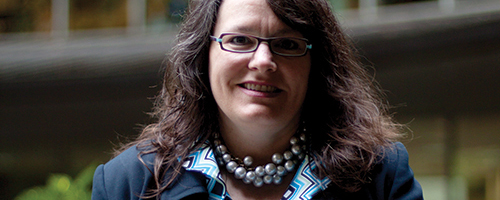Working for inclusion in the classroom
WASHINGTON – All Elizabeth Keig asks for is a chance to be like everybody else.The 17-year-old senior from Troy High School in Fullerton, Calif., is hearing impaired and therefore, technically, learning disabled.
But she has been mainstreamed since age 4 and now takes mostly honors classes in preparation for college.
“I’m just happy to not be put to the side,” Keig said, signing and talking a mile a minute. “Inclusion has been wonderful for me.”
She and more than 100 other participants gathered Tuesday at the U.S. Capitol to discuss inclusion, an educational option receiving more and more attention as school districts place increasing numbers of special-education students in classrooms with mainstream students.
Federal law requires that students with disabilities be given “a free, appropriate public education in the least restrictive environment possible.”
The conference was the brainchild of Jay Feitshans, a middle school student from the Philadelphia area who is both gifted and disabled.
With the help of his mother, Ilise, a lawyer and a law professor, he organized a day when parents, teachers and mainstream and learning-disabled students could meet to talk about what works and what doesn’t in inclusion classrooms.
Most had come from southern New Jersey, but some had made it from up and down the East Coast in addition to California.
George James, an administrator at Pennsauken High School in Camden County, N.J., rounded up 37 sleepy teen-agers in the wee hours Tuesday and herded them to Washington in an effort, he said, to combat prejudice.
They are members of the World of Difference, an antibias group of students who teach their peers about confronting and overcoming intolerance.
James called the conference a good opportunity to let his students, most of whom are not learning disabled, “gain a little more sensitivity about an important issue.”Though she had had little experience in inclusion classrooms, Shayla Poole said she was excited about the idea of talking about them.
“Prejudice isn’t just because of race and gender,” said Poole, a 15-year-old freshman at Pennsauken, N.J., High. “It’s not necessarily about something you can see.”
After a morning tour of the Capitol, conference participants hunkered down to slay myths and dispel stereotypes with tough questions and candid responses.It is sometimes tough, Keig admitted, to endure the taunting of students who don’t understand her difference.
“I’m not the disabled one; they’re disabled by their low expectations,” she said. “I feel like I have to educate them.”
Jay and Ilise Feitshans said the point of the conference was to uncover certain realities about inclusion from the people in the trenches. A few minutes spent around the conference tables, where students had gathered in small groups, yielded just that – realities.
There is no cure for a learning disability, students learned. People with learning disabilities aren’t that different from people without them. It’s sometimes frustrating for mainstream students in inclusion classrooms to see their special-ed classmates get more attention.
Many mainstream students said they felt unprepared for inclusion. Some had no idea what such a classroom included.
“Everybody isn’t aware enough to know how to cooperate,” said Cynthia Guzman, a senior from Pennsauken High. “If everyone were prepared for it, it would work better.”
Asked to define inclusion, Cynthia Cline Campbell, a Haddonfield mother of one gifted learning-disabled student and one mainstream student, said she saw the concept as a lofty one but one not easily attained.
“I feel as if you’ve asked me to give Martin Luther King’s “I Have a Dream’ speech,” Campbell said. “I have a vision where learners of all abilities are included in the same classroom.”
Moments before addressing the audience, Jay Feitshans stood to one side of the grand room, where some of the laws at issue were being hammered out, and surveyed the crowd anxiously.
While secure about his expertise – he had just been lauded for his work in inclusion through a letter from U.S. Education Secretary Rod Paige – he felt a bit put off by the crowd.
When it was his turn to speak, however, he was confident and his message unequivocal.
“Sometimes,” he said, “I finish my work first, but the answers are short and wrong. I’m just dumb about some stuff. But I’m not disabled.”



